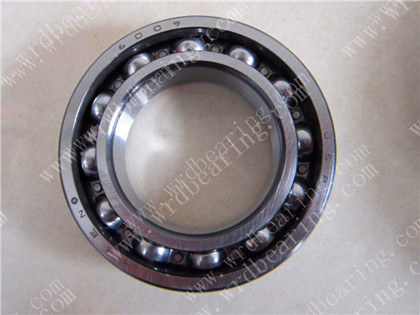Filling Slot Ball Bearing
Radial (Deep Groove) Ball Bearings The two basic types are the non-filling-slot (Conrad) and the filling-slot (maximum capacity). The non-filling-slot type has deep raceways and accommodates high radial loads and moderate thrust loads in either direction. Bearing, Ball, Single Row; 12MM Bore; 28MM Outside Diameter; 8MM Outer Race Width; 1 Seal; Ball Bearing; ABEC 1 ISO P0; No Filling Slot; No Snap Ring; No Internal Special Features; C0-Medium Internal Clearance; Steel Cage; Contact Seal Enclosure. In a slot-fill radial bearing, the inner and outer races are notched on one face so that when the notches are aligned, balls can be slipped in the resulting slot to assemble the bearing.
ISC Companies and affiliate Adams-ISC are distributors of mechanical power transmission parts including unmounted ball bearings. For more information about the brands we offer and/or pricing, please contact us by phone 763-559-0033, by email custserv@isccompanies.com, or by filling out our online contact form.
Ball bearings are used for high speed applications with light to moderate loads and are typically less expensive than roller bearings. A ball bearing is an anti-friction bearing that uses a series of rolling balls held between inner and outer rings (races). They can support radial and axial loads and reduce friction, heat, and wear.
Ball Bearing With Filling Slot

A ball bearing is made up of an outer race (cup), an inner race (cone), the rolling element (ball), and in many cases a cage (retainer). In most applications, one race is stationary while the other rotates. Ball bearings typically have a lower load capacity than other rolling element bearings due to a smaller contact area between the balls and the races. If the bearing is overloaded, the balls can deform or flatten over time, causing the bearing to fail.
Loads

- Radial: A load that is perpendicular to the shaft center line
- Axial or Thrust: A load that is parallel to the shaft center line
Types of Ball Bearings

Ball Bearing Filling Slot
Radial (Deep Groove) Ball Bearings
The two basic types are the non-filling-slot (Conrad) and the filling-slot (maximum capacity). The non-filling-slot type has deep raceways and accommodates high radial loads and moderate thrust loads in either direction. The filling-slot type has more balls and accommodates higher radial loads but as the radial load increases the thrust load capacity decreases. Double-row versions handle higher radial loads, but have the same speed rating as single-row.
Self-Aligning Radial Ball Bearings
Used when the shaft and housing bore are not easily aligned, which can happen from mounting error or shaft deflection. Two design options are internal and external. The internal version has two rows of balls in a grooved, double-row inner ring, which is contained in an outer ring with a spherical outer race. The external version is similar to a single-row, deep groove bearing except the outer ring has a spherical outer surface that mates with a matching opposing raceway.

Angular-Contact Ball Bearings
Filling-slot Ball Bearing
A single-row, angular-contact bearing accommodates higher thrust loads and moderate radial loads when compared with deep groove ball bearings. The ratio of thrust to radial load depends on the contact angle between the races and the bearing axis. To accommodate thrust loads in one direction, angular-contact bearings are mounted singularly or in sets of two or more. Paired sets can be back-to-back or face-to-face and handle thrust from both directions or they can be mounted in tandem to maximize stiffness and optimize speed rating.
Thrust Ball Bearings
Thrust ball bearings carry thrust loads and provide axial shaft location. The space between the rings is perpendicular to the axis of rotation. They have two races that are hardened to resist wear. Thrust bearings are classified by the shape of the race. Flat race types carry light thrust loads without restraining shaft movement. Grooved race thrust bearings are more common. The race mounted on the shaft is usually the one that rotates.
Precision

Operate with high accuracy and are machined with exact sizing. Retainers are more exact and the material that is used is higher grade and is designed to hold shape and reduce friction. The amount of precision can be categorized by the ABEC (Annular Bearing Engineering Committee) classification. These bearings are often used in machine tools, spindles, and precision instrumentation.
Content on this page was created using excerpts from thePower Transmission Handbook (5thEdition), which is written and sold by the Power Transmission Distributor’s Association (PTDA).